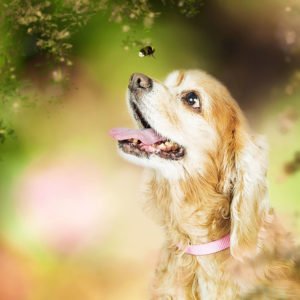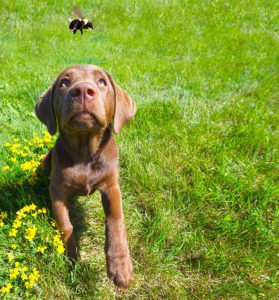Oh no.!!
Fido comes bounding up to you …only…he looks hilarious. No, scratch that! He looks bloated. Only in his face, though.
You know what this means: he ate the bee.
In between stifling your laughter, the responsible pet parent in you comes back. You begin to wonder: is he going to be okay? Is there anything I should be doing to help him right now?
We’ll explore all these questions, as well as tell you some quick tricks to prevent this sort of thing from happening again in the following blog.
Why Do Dogs Eat Bees?
As natural hunters, dogs often have their interest piqued by fast-moving objects they see out in nature. For certain classes such as retrievers or pointers, they’ll excitedly begin chasing after anything they see that moves, such as large animals such as sheep or tiny insects… like bees.
Some pups are also just naturally curious by the buzzing and bumbling of bees and, as all smart animals do, decide to investigate with their mouth.
Other dogs just might enjoy it! Much like humans enjoy trying to capture butterflies with nets, some dogs may just get a kick out of capturing bees….with their teeth.
Unfortunately, many of these forays into mouth-based detective work can lead to some unpleasant (albeit hilarious looking) consequences – getting stung. As a result, some dogs who get stung may develop a phobia of bees and other flying insects. Dogs who are afraid of bees may retreat at the first sound of buzzing or they may freeze in fear at the sight of a bee.
Dogs who have been stung by bees may also develop an obsessive-compulsive behavior known as fly-snapping, which is where dogs snap at imaginary flies that aren’t there. Interestingly, some breeds such as the Bernese Mountain Dog and Cavalier King Charles Spaniel are more liable to develop this disorder.
Can Bee Stings Hurt Your Dog?
The short answer is that it depends on whether or not your dog is allergic.
Bees are a species of insect that belongs to the order known as Hymenoptera. When these types of insects sting another animal, they inject venom through the skin via their stinger.
For most animals, these sorts of incidents will only cause mild discomfort and pain.
What are the symptoms of a bee sting?
If you’ve ever been stung by a bee, then you know how unpleasant and annoying it is. Your furry friend will likely experience many of the same symptoms that you would if you were stung by a bee.
They may begin whining in response to the pain and even start pacing as a means of trying to escape the discomfort. If they ate the bee and ingested it, they might also begin involuntarily drooling as their mouth tries to cope with the irritation.
You may also notice the affected area begin to swell or become red. It may also become hot to the touch. Your pup might also begin to paw at their face. It’s pitiful, we know!
What are the symptoms of an anaphylactic reaction?
If your dog is allergic to bee stings and has been stung, they may begin appearing very weak and woozy as they walk.
Additionally, you may notice that their breathing has become labored or heavy-handed.
Dogs who are allergic and have been stung may also experience severe swelling around their mouth, throat, neck, or head.
Finally, and most worryingly, your dog may collapse as a result of the shock.
If you notice your dog displaying any of these symptoms following their ingestion of a bee, get them to your veterinarian as soon as possible. Prompt medical treatment may be the difference between them surviving or not.
What to Do if Your Dog Eats a Bee
First and foremost, you have to figure out whether or not your four-legged friend actually ate the bee. This is especially important if you didn’t see them swallow the bee.
To figure this out, open up their chompers and give their mouth a thorough look all around.
We mean it. Get in there.
Inspect their gums, tongue, the back of their throat, the top of their mouth, everywhere. What you’re looking for is two things: the bee carcass, and their stinger.
If you find their stinger, for goodness sake– do not pull it out – that can actually push out more venom into your dog’s system. Instead, gently scrape the stinger with a flat surface by sliding it in a single direction out of your dog’s mouth.
If you suspect that your dog ate a bee but don’t have the evidence to prove it, the best thing you can do is closely monitor them over the next few hours. Take them to your veterinarian if you notice your dog spontaneously vomiting or having trouble breathing.
If you suspect your dog is going into or is about to go into anaphylactic shock, get them to a veterinarian immediately. While some people on the internet claim that just giving your dog an antihistamine is sufficient, please–do not listen to this advice. Your veterinarian should evaluate your furry friend so that they can prescribe the right medication given your dog’s condition.
In the meantime, give them lots of love! Remember how painful and frightening your first bee sting was? Now imagine how tough that would have been if your mom or dad hadn’t been there to comfort you!
How to Prevent Your Dog From Eating Bees
Luckily, it’s not as though bees are just invading our homes. There’s plenty of things you can do to minimize the chances of your dog having a second lunch made entirely of bees.
The first is to eliminate any environmental factors that are encouraging bees to gather near your home. Remove any plants that attract bees such as lavender or roses, or better yet, plant some flowers or herbs that naturally repel pests such as mint or rosemary.
Additionally, consider changing your walking routes! We know – Sparky loves that one col-de-sac with the kids playing outside all the time. But if that particular route is just littered with bees or even beehives, it’s maybe best to avoid it.
Also, you may need to invest some time in teaching your furry buddy how to not be afraid of bees (which is something we all could use some work on). Counter-conditioning may be of particular help in training them to remain calm around these buzzy pests.
However, if your dog just thinks that eating bees is the bee’s knees, then you may need to muzzle them when they’re going to be in environments where they can eat them.
The best thing to remember is to be patient with your dog after they eat a bee.
Being stung by a bee can be traumatic enough, so imagine how scary accidentally eating one of those suckers must be!
If your dog eats a bee, monitor them for any especially nasty reactions, give them lots of love while they recover, and remember to take a photo of their hilariously inflated face to get those sweet, sweet likes on Facebook.
Banixx Blogs
For sure, we know by now that you care a lot about your dog’s health – otherwise you wouldn’t be reading this blog! That’s why we hope you’ll come back to our blog to learn more about how to keep your furry, four-legged friend happy and healthy. If, on the other hand, you are interested in how to clean up messy eye boogers or goop or how to maintain your dog’s health
when you can’t afford a vet…we have some suggestions there.
Sources
- https://www.akc.org/dog-breeds/bernese-mountain-dog/
- https://www.reddit.com/r/aww/comments/augjxn/he_eated_a_bee/
- https://www.akc.org/dog-breeds/cavalier-king-charles-spaniel/
- https://www.petpoisonhelpline.com/blog/bee-and-wasp-sting-toxicity-in-pets/
- https://www.akc.org/expert-advice/health/why-do-dogs-try-to-eat-bees-and-what-to-do-if-they-eat-bees/
- https://www.purina.co.uk/articles/dogs/health/parasites/dog-stung-by-bee-wasp
- https://sports.yahoo.com/dont-panic-dog-eats-bumblebee-192826339.html?guccounter=1&guce_referrer=aHR0cHM6Ly93d3cuZ29vZ2xlLmNvbS8&guce_referrer_sig=AQAAAJz5QLOgAawkBU3Sqn8w3N2qtHm7UoxgYhpe6WKhnm8gNFoyipDYLY5FkC0TwUYmuM9EVkEPXDx6mrhNh3QeNZ_nCQ2nvXxWl4jc7ITJP-l8J0LR-478vMI0Q0amT3ozTfF3h2yfJfhFQyO6GKhan-unzYvmuIYK2Zqshwpe8xTo
- https://thepracticalplanter.com/plants-that-repel-bees-and-wasps/#:~:text=5%20%E2%80%93%20Mint,flower%20really%20deters%20these%20pests.
Share this Post
Featured Post
Recent Posts
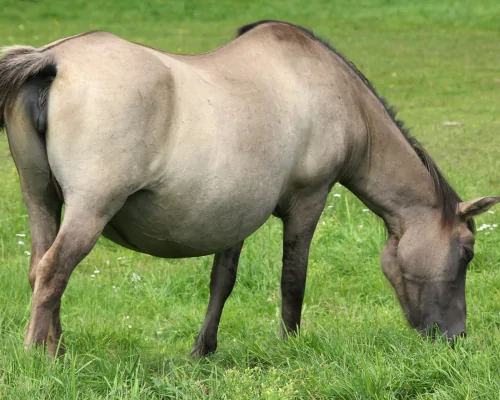
Managing the Mamas –Part 2 –The development process
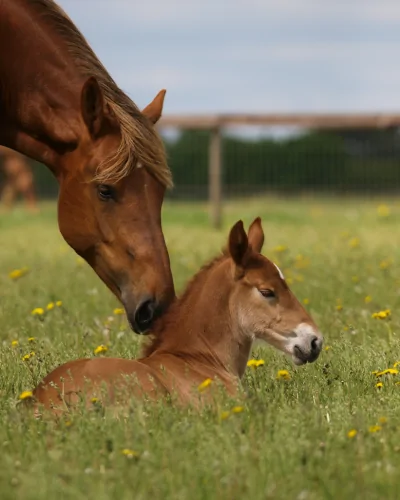
Managing the Mamas: Part 1 – Preparing to Breed Your Mare

HOW MANY TOES?? Caring for the Polydactyl Cat
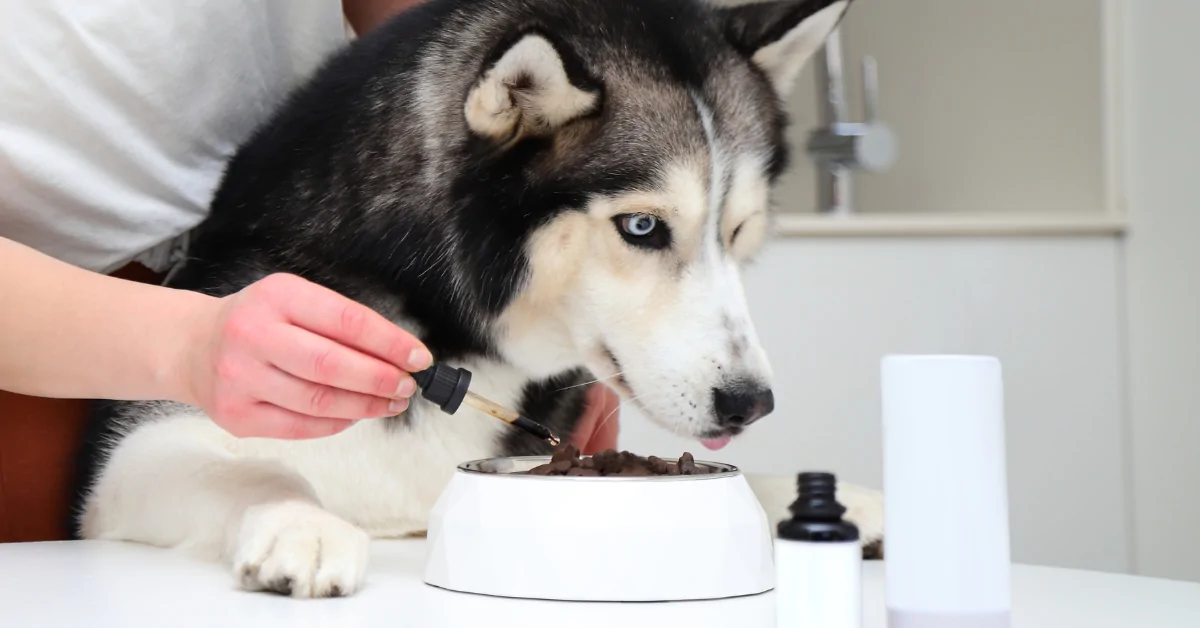
Do Dog Joint Supplements Actually Work?
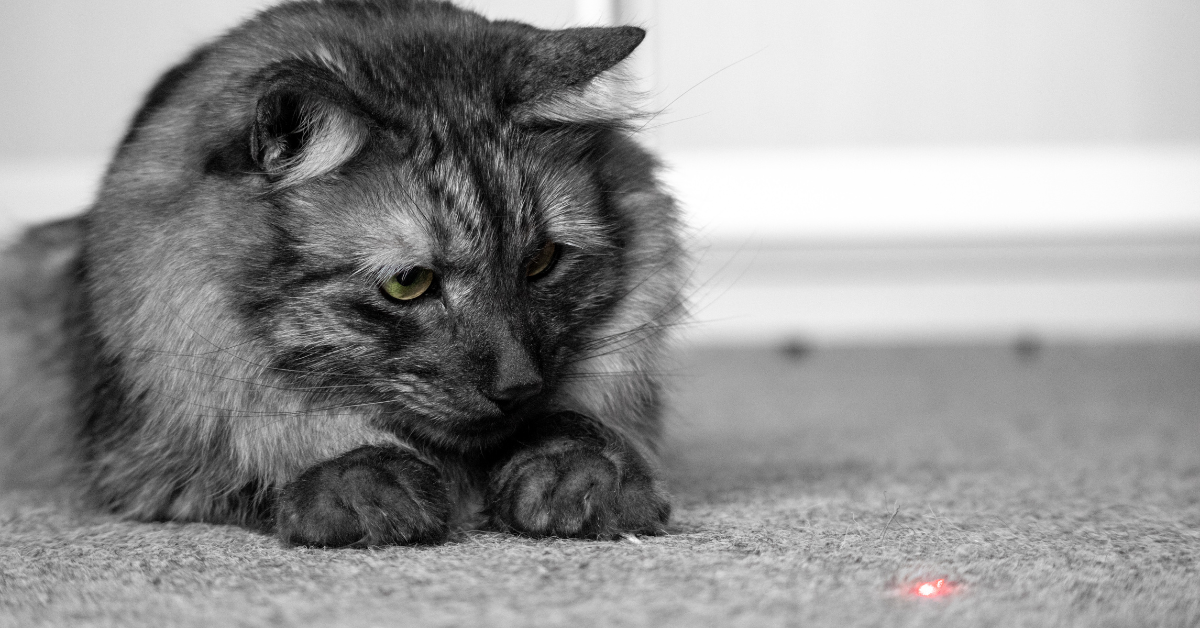
Are Laser Pointers Bad for Cats? or, are they Purr-e Fun?


